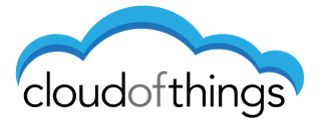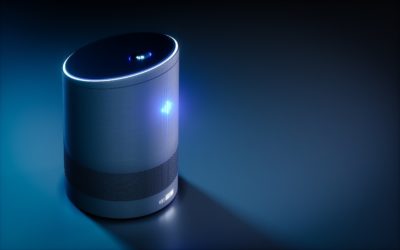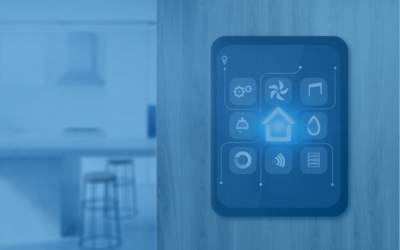DeviceTone and Tondo Light Up the IoT Edge
As the world’s population increases, so do the number of people living in urban areas.
In 1950, the urban population numbered approximately 746 million. According to a report by the United Nations, that figure had risen to 3.9 billion in 2014. It is estimated that by 2050, 66 percent of the world’s population will be living in an urban environment.
Cities currently consume over 70 percent of the world’s energy supply, a figure which is certain to increase steadily over time.
Growing urbanization has given rise to many concerns within governments and corporations as well as businesses in both the public and private sectors. Considerations are being made regarding the provision of a secure and reliable supply of affordable energy, environmental impacts including climate change, and even food and water shortages are being discussed. Game plans are being devised for a world in which natural resources and energy are becoming increasingly scarce and expensive.
How does smart lighting fit in and can smart lighting lead the way in shaping the cities of the future?
Tondo, the first wireless DALI Master smart light relay and DeviceTone, a next-generation agile IoT edge technology from Cloud of Things are bringing to market “smart lighting” solutions for cities as well as large buildings and campuses that are often run like small cities.
Tondo is embedding DeviceTone’s edge and flexible CloudSwitch technology, including WiFi, LoRa-Mesh, and ULE integration, to enhance their offerings.
“We’ve been working collaboratively for over a year,” said David Chouraqui, CEO of Cloud of Things. “Our vision is perfectly aligned with Tondo’s, and the combination of our technologies and experience are making it possible to deliver full, advanced, controlled lighting solutions with benefits including safer streets and buildings, energy usage reduction, and significant cost savings for Tondo’s customers.”
The DeviceTone connected device management technology is being embedded into Tondo’s wireless lighting solutions, making it faster for Tondo to market future-proof, and economically cost-effective lighting solutions.
DeviceTone technology includes highly secure plug-and-play connectivity firmware, gateway control, and access to robust IoT cloud infrastructure. DeviceTone’s CloudSwitch technology will enable these smart products to communicate with any IoT cloud using any network protocol from WiFi to LoRa.
“DeviceTone’s components complete our solution,” said Guy Saadi, CEO of Tondo, a pioneering and fast-growing connected lighting solution provider. “With our innovative DALI Master technology, we help lighting brands and lighting fixture manufacturers to take advantage of a new, previously inaccessible set of features, and enrich them with information and insights to further promote their businesses, and with DeviceTone’s technology we make that affordable and scalable.”
The need for light is a basic human necessity and the potential of smart lighting can go way beyond merely illumination. These solutions go towards energy saving – saving on your electricity bill and a commitment to saving natural resources but also, for example, being able to adjust the amount of light, type of light and energy used to individual needs, for convenience, comfort, and wellbeing.
Homes, offices, hotels, public spaces to entire cities, on its own; lighting accounts for 19 percent of the world’s total electricity consumption, the energy is predominantly used for lighting commercial and public city buildings with even more going towards street lighting. Smart lighting could be anything from smart light bulbs to a fully automated system, controlling the amount of natural and artificial light in a building or operating exterior lighting.
The common goal among all these solutions is to move away from traditional lighting control for operating lights by integrating IoT sensors into lighting fixtures which can not only control lighting but can also collect data, use cloud services and incorporate user input via the Internet, in turn being able to optimize lighting for individual needs at a touch of a button through an application. The benefits include increased energy savings, enhanced functionality, and user-centric lighting.
Of approximately 300 million street lights across the world, only one in ten are using high-efficiency LEDs and only 2 percent are connected. Integration of smart sensors can deliver energy savings of up to 80 percent, significantly increasing positive impact on climate change targets. Such integration is currently underway in the south of the Netherlands at the Port of Moerdijk, a collaboration by Dutch companies Tvilight and Dynniq, where they are installing smart street lighting controls across approximately 6424 acres of space in a bid to cut back energy consumption and maintenance costs.
For cities, businesses and society – as well as energy efficiency, many benefits come from smart lighting which was not even a consideration ten years ago.
Smart lighting seems to be a solid platform to build the infrastructure on which smart technology can then be developed. Together with the Internet of Things, it can be used to help improve our economy, lower crime rates, and enhance mood and wellbeing, while also reducing energy consumption and lowering CO2 emissions, benefits that can shape everyone’s future.
Visit Tondo and DeviceTone at the Light + Building show, March 18-23 in Frankfurt – hall 4.0, booth C6.
Originally published on IoT Evolution
Similar Blogs
Cloud of Things joins the Tondo-Smart group, a leading public smart-city vendor
Ultra-Low Energy (ULE), an extension of the Digital Enhanced Cordless Telecommunications (DECT) physical layer specification that supports low power devices, is becoming an increasingly popular approach, promoted by the ULE Alliance as “a way to provide sensors, actuators and other smart devices in the Internet of Things (IoT) with two-way transmission capability over a dedicated frequency band of 1900MHz.”
DSP Group and Cloud of Things Combine Forces and Introduce a Fully Managed ULE IoT Cloud Services Gateway
Ultra-Low Energy (ULE), an extension of the Digital Enhanced Cordless Telecommunications (DECT) physical layer specification that supports low power devices, is becoming an increasingly popular approach, promoted by the ULE Alliance as “a way to provide sensors, actuators and other smart devices in the Internet of Things (IoT) with two-way transmission capability over a dedicated frequency band of 1900MHz.”
As Smart Home Solution Adoption Explodes, Service Providers Seek Simplicity and Scale
The collapse of the housing market in North America in 2008, driven in large part by the near-collapse of the economy, is now in the rearview mirror. The market today is healthy and evolving, responding to the impact of COVID-19 in America’s largest cities, which is driving up the prices of luxury homes in the suburbs and more affordable housing for those looking to leave small, cramped apartments and work remotely from larger, affordable apartments as remote working becomes more acceptable to certain businesses.


